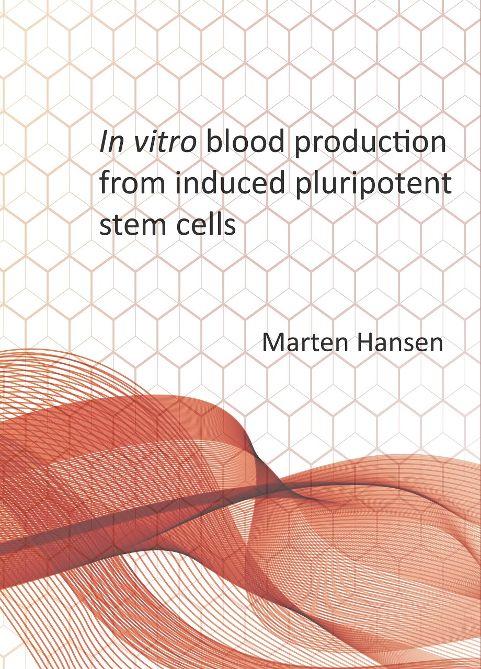Thesis Marten Hansen
On 25 November 2020 (16:00) Marten Hansen defended his PhD thesis 'In vitro blood production from induced pluripotent stem cells' at the University of Amsterdam
Promotor: MM von Lindern PhD
Copromotores: E van den Akker PhD and BA van der Reijden PhD
Venue: Agnietenkapel and online
Summary
The aim of this thesis was to establish a cell culture system that could faithfully recapitulate hematopoietic development from iPSC, and specifically the development of the megakaryopoietic lineage. To this end we developed novel methodology to generate and differentiate induced pluripotent stem cells (iPSC) to hematopoietic/megakaryocyte lineages. We showed that megakaryoblasts can be reprogrammed into iPSC lines with similar pluripotent characteristics as other non-megakaryoid derived iPSC lines, thus potentially preserving persisting epigenetic footprints that may be crucial for hematopoietic differentiation. We developed an efficient hematopoietic differentiation method allowing molecular characterization of defects in megakaryopoiesis and in hereditary thrombopenia but also drug screening. In this thesis we used patient specific BDPLT17 iPSC lines, which recapitulated the phenotypes of the disease, and enabled us to uncover (part of) the molecular mechanisms underlying BDPLT17. Specifically, the DNA binding defective mutated GFI1B recruits chromatin remodeling protein LSD1 thereby inhibiting the normal function of GFI1B in a dominant negative manner. The data also explains thrombopenia induced by LSD1 inhibitors used to treat solid tumors, underscoring the usability of iPSC models to monitor drug sensitivity. In addition, we demonstrated an essential role of LSD1/GFI1B during hemogenic endothelium transition to hematopoiesis from iPSC. The data indicate that patient derived, and wild type iPSC models can be investigated using the novel developed methodology. The results from this thesis further our mechanistic understanding of megakaryopoietic pathology and may allow the production of hematopoietic cells including platelets from iPSC, thus taking important steps towards novel therapies and transfusion products.
Chapters
Introduction
1.1 General introduction
1.2 Erythropoiesis and Megakaryopoiesis in a Dish
Abstract
Result
2.1 Generation of multiple iPSC lines
- Generation and characterization of human iPSC line MML-6838-Cl2 from mobilized peripheral blood derived megakaryoblasts Abstract
- Generation and characterization of human iPSC lines SANi001-A and SANi002-A from mobilized peripheral blood derived megakaryoblasts Abstract
- Generation and characterization of a human iPSC line SANi005-A containing the gray platelet associated in GFI1B.heterozygous mutation p.Q287* Abstract
- Generation of human erythroblast-derived iPSC line using episomal reprogramming system Abstract
2.2 Efficient production of erythroid, megakaryocytic and myeloid cells, using single cell-derived iPSC colony differentiation. Abstract
2.3 Human induced pluripotent stem cell-derived blood products: state of the art and future directions. Abstract
2.4 LSD1/KDM1A and GFI1B orchestrate hematopoietic emergence from induced pluripotent stem cells.
2.5 Molecular mechanisms of bleeding disorder-associated GFI1B Q287* mutation and its affected pathways in megakaryocytes and platelets. Abstract
2.6 The RNA-Binding Protein ATXN2 is Expressed during Megakaryopoiesis and May Control Timing of Gene Expression. Abstract
Discussion
3.1 General discussion
Appendix
4.1 Een decennium geïnduceerde pluripotente stamcellen; een overzicht. Abstract
4.2 Summary/samenvatting
